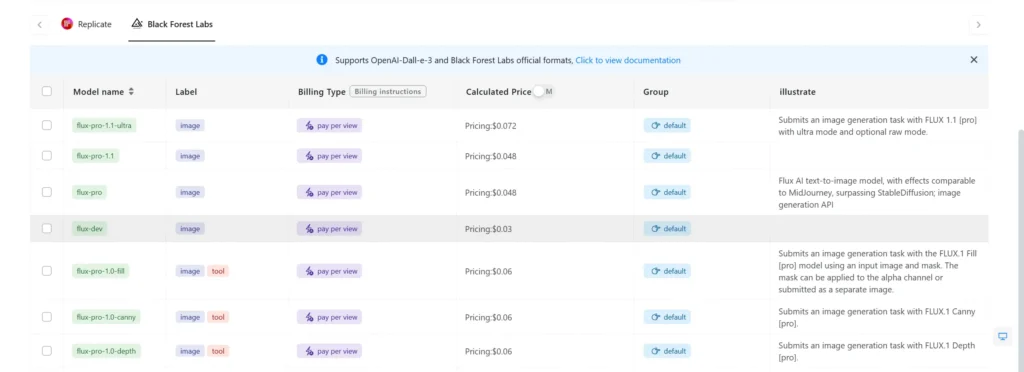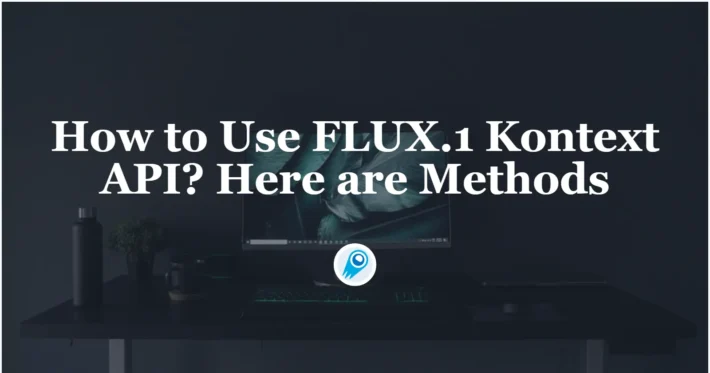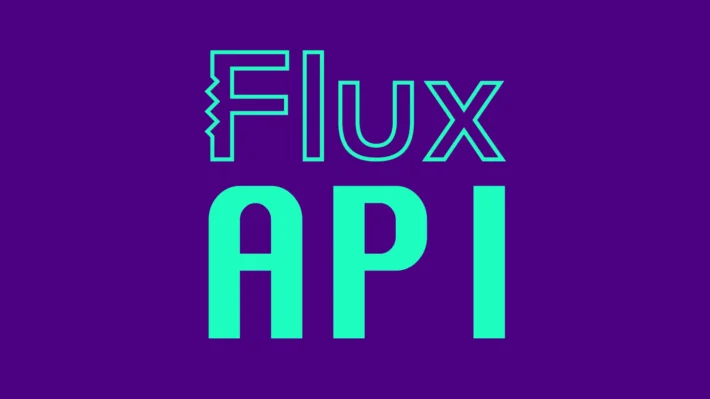What Is Flux AI Image Generator?

Flux AI Image Generator is a next-generation, AI-driven platform designed to transform textual descriptions into rich, high-fidelity images. Harnessing state-of-the-art models developed by Black Forest Labs, Flux AI offers a suite of tools that cater to creators, developers, and enterprises alike, enabling rapid prototyping, visual storytelling, and bespoke content creation. In this article, we explore what Flux AI Image Generator is, how it works, its recent innovations, practical applications, broader industry impact, and prospects for the future.
What Is Flux AI Image Generator?
Flux AI Image Generator, often stylized as FLUX.1, is a state-of-the-art text-to-image model developed by Black Forest Labs, a German AI startup founded in early 2024 by former Stability AI researchers . Operating on transformer-based flow technology scaled to 12 billion parameters, the Flux model converts natural language prompts into high-fidelity visuals across a spectrum of styles—from photorealistic portraits to fantastical landscapes ﹘ all within seconds. Its flexible licensing tiers range from an open-source Apache-licensed Schnell (“Fast”) variant to proprietary Pro and Dev models, catering to hobbyists, researchers, and commercial clients alike.
Origins and Development
Flux traces its lineage to academic work at Ludwig Maximilian University of Munich, where the founders—Robin Rombach, Andreas Blattmann, and Patrick Esser—collaborated on foundational research that ultimately birthed Stable Diffusion in 2022. Building upon this expertise, Black Forest Labs engineered Flux with a clear focus on performance, prompt adherence, and ethical guardrails. Initial public release of Flux 1.0 occurred in August 2024, followed by the launch of Flux 1.1 Pro on October 2, 2024, which introduced Ultra and Raw modes for enhanced resolution and hyper-realism .
Licensing Tiers and Accessibility
- FLUX.1 Schnell (Open-Source): Released under the Apache License, allowing researchers and developers unrestricted access to the model’s weights and source code.
- FLUX.1 Dev (Non-Commercial): Available under a source-available, non-commercial license for prototyping and academic use.
- FLUX.1 Pro (Proprietary): Offered via API subscription, this variant unlocks full performance and commercial usage rights, backed by service-level agreements.
How Does Flux AI Image Generator Work?
Flux AI leverages a rectified flow transformer architecture—a hybrid of flow-based generative modeling and attention mechanisms—to optimize image synthesis. This approach enables the model to maintain high visual fidelity while ensuring prompt instructions are followed with minimal deviation.
Rectified Flow Transformer Architecture
Flow-based models map a simple distribution (e.g., Gaussian noise) to complex data distributions (images) through invertible transformations. By integrating transformer blocks within this framework, Flux can efficiently capture both local features (edges, textures) and global context (lighting, composition), resulting in coherent and detailed outputs .
Multi-Stage Generation Process
- Encoding the Prompt: Natural language processing modules convert the textual prompt into a high-dimensional embedding.
- Latent Diffusion via Flow Steps: The model initializes with random latent noise, then applies a sequence of flow transformations influenced by the prompt embedding.
- Decoding to Pixels: The final latent representation is decoded into a high-resolution image, with options to adjust style, aspect ratio, and color palettes.
Model Variants: Schnell, Dev, Pro
- Schnell (Fast mode): Prioritizes generation speed, producing images in under 5 seconds at moderate resolution.
- Dev (Development mode): Balances quality and flexibility, supporting intermediate-resolution outputs with extended fine-tuning capabilities.
- Pro (Production mode): Delivers up to 4 megapixels of resolution in Ultra mode without sacrificing generation speed, ideal for commercial and creative industries.
What Are the Key Features and Capabilities?
Flux AI stands out through a combination of performance, versatility, and user-friendly controls, making it a compelling choice for both professionals and hobbyists.
High-Resolution Output and Detail Control
The Ultra variant of Flux 1.1 Pro can generate images up to 4 megapixels—four times the base resolution—while maintaining sub-second inference times. Users can specify exact dimensions or aspect ratios to fit social media, print, or film production needs .
Custom Styles, Color Palettes, and Prompts
Beyond simple text prompts, Flux offers:
- Style Presets: Predefined artistic filters (e.g., “Baroque oil painting,” “Futuristic cyberpunk”) that reshape the base model’s outputs.
- Color Control: Palette locking ensures brand consistency or thematic cohesion across multiple images.
- Prompt Chaining: Layered prompts enable complex scene building by sequentially refining elements (foreground, background, lighting). .
Speed and Scalability
Thanks to its flow-based backbone, Flux achieves generation times as low as 3 seconds for standard resolutions on consumer-grade GPUs. The API infrastructure scales horizontally, serving thousands of concurrent requests via cloud deployment partnerships—including its recent adoption as a foundation model on NVIDIA’s Blackwell microarchitecture announced January 2025.
How Has Flux AI Evolved and What Are the Latest Developments?
Since its initial release, Flux AI has rapidly iterated on capabilities, expanded integrations, and formed strategic partnerships that broaden its ecosystem.
Flux 1.1 Pro, Ultra, and Raw Modes
- Flux 1.1 Pro (2 Oct 2024): Introduced flagship performance enhancements, refined prompt adherence, and improved stability across diverse subjects .
- Ultra Mode (6 Nov 2024): Quadruplicates baseline resolution, supporting up to 4 megapixels without longer inference times.
- Raw Mode: In November 2024, Black Forest Labs introduced Raw Mode—a generation setting that imparts a candid, less “synthetic” aesthetic to outputs. Raw Mode increases subject diversity and elevates realism in nature photography by simulating characteristics found in authentic camera RAW captures. Unlike traditional RAW editing software, Flux’s Raw Mode applies learned statistical patterns during synthesis to avoid over-processing, appealing to creators seeking genuine textures and lighting variations
Third-Party Integrations
- ComfyUI and Automatic1111 WebUI Forge: Community-driven interfaces enabling local deployment and fine-tuning of Flux models.
- Hugging Face and Replicate Repositories: Open-source hosting of Schnell and Dev checkpoints, fostering research and custom development .
- CometAPI: CometAPI is a unified AI model aggregation platform that provides developers with one API endpoint to access over 500 different AI models—ranging from language models like GPT‑4.1 to image and video generators like Flux. CometAPI provides Flux APIs such as black-forest-labs/flux-1.1-pro etc and pay per view.
Platform and Partnership Milestones
- Integration with Grok (August 2024): Flux powered Elon Musk’s Grok AI chatbot on X Premium, demonstrating viral deepfake capabilities—though later replaced by Aurora in December 2024 amid content moderation concerns .
- Mistral AI’s Le Chat Collaboration (18 Nov 2024): Flux Pro became the default image generator for Mistral’s French-language chatbot, expanding its reach in European markets .
- In April 2025, Nvidia and Black Forest Labs collaborated on the “Nvidia AI Blueprint for 3D-Guided Generative AI,” enabling developers with RTX 4080+ GPUs to convert simple Blender scenes into polished 2D renders via Flux.1. By mapping 3D geometry—buildings, vegetation, vehicles—into textual and spatial prompts, this toolkit offers unprecedented control over image composition, bridging the gap between 3D modeling and generative AI .
What Are the Primary Use Cases and Applications?
Flux AI’s versatility has driven adoption across creative, commercial, and research domains, but it also raises important questions about ethical usage.
Creative Industries and Content Production
- Graphic Design and Advertising: Agencies harness Flux for rapid prototyping of campaign visuals, reducing reliance on stock imagery.
- Film and Animation: Storyboard artists use Flux to iterate on scene concepts, while indie filmmakers generate background plates.
- Game Development: Asset teams employ Flux for concept art, character portraits, and environmental mockups.
Commercial Products and Branding
Businesses leverage Flux’s brand-color locking and style presets to produce consistent marketing assets at scale—automating social media graphics, website banners, and product mockups with minimal human intervention.
Research and Academia
The open-source Schnell variant underpins experiments in controllable generation, latent space interpolation, and multi-modal learning, furthering advancements in AI interpretability and robustness.
Universities and research labs employ Flux AI to synthesize training data for computer vision projects—particularly for human pose estimation and hand-tracking studies. The model’s anatomical accuracy reduces the need for costly motion-capture sessions, democratizing access to rich, labeled datasets. Flux’s API access even includes metadata flags denoting training presets, aiding reproducibility in academic workflows.
Deepfake and Misuse Concerns
On May 8, 2025, researchers at the Oxford Internet Institute published a report ordering tighter controls on emergent deepfake-capable generators—explicitly citing open-source derivatives of Flux AI among tools with potential for misuse. The study revealed over 35,000 “deepfake generator” downloads and nearly 15 million installs since late 2022 on platforms like Civitai and Hugging Face. It decried the minimal technical barriers and called for legislation to criminalize not only distribution but also creation of non-consensual deepfake imagery targeting private individuals, especially women.
What Are the Ethical and Regulatory Considerations?
As Flux proliferates through both open-source channels and proprietary APIs, stakeholders grapple with balancing innovation and societal safeguards.
Deepfake Proliferation and Abuse
The Oxford study identified over 35,000 deepfake generation tools on a single platform, with close to 15 million downloads—many misappropriating Flux’s open-source Schnell model for non-consensual explicit content ﹘ a trend prompting researchers to warn of an “intimate image abuse epidemic”.
Industry Self-Regulation and Content Moderation
- API Safeguards: Black Forest Labs enforces abuse policies for its Pro API, including rate limiting, user verification, and flagged prompt filters.
- Partner Guidelines: Platforms integrating Flux (e.g., Mistral’s Le Chat) implement custom moderation layers, though enforcement efficacy varies.
Legislative and Policy Responses
- UK Crime and Policing Bill: Set to criminalize creation (not just distribution) of non-consensual deepfakes, reflecting growing governmental concern.
- Global Regulatory Trends: The EU AI Act and various national frameworks are moving towards mandatory watermarking, provenance tracking, and rights-holder exceptions for generative AI outputs.
Conclusion
Flux AI Image Generator represents a significant milestone in the generative AI landscape, delivering a blend of high-quality imagery, rapid inference, and flexible licensing. From its academic roots to strategic collaborations with xAI and NVIDIA, Flux has matured into a versatile platform powering both creative expression and commercial innovation. However, the same capabilities that drive its adoption also fuel ethical and regulatory debates, especially around deepfake misuse. As the industry moves towards stronger safeguards—legislative, technical, and societal—Flux’s continued evolution will hinge on balancing open research with responsible stewardship, ensuring that the future of image generation remains both visionary and conscientious.
Getting Started
CometAPI provides a unified REST interface that aggregates hundreds of AI models—under a consistent endpoint, with built-in API-key management, usage quotas, and billing dashboards. Instead of juggling multiple vendor URLs and credentials.
Developers can access FLUX.1 [dev] API through CometAPI. To begin, explore the model’s capabilities in the Playground and consult the API guide for detailed instructions. Before accessing, please make sure you have registered and logged in to CometAPI and obtained the API key. CometAPI offer a price far lower than the official price to help you integrate, and you will get $1 in your account after registering and logging in!



